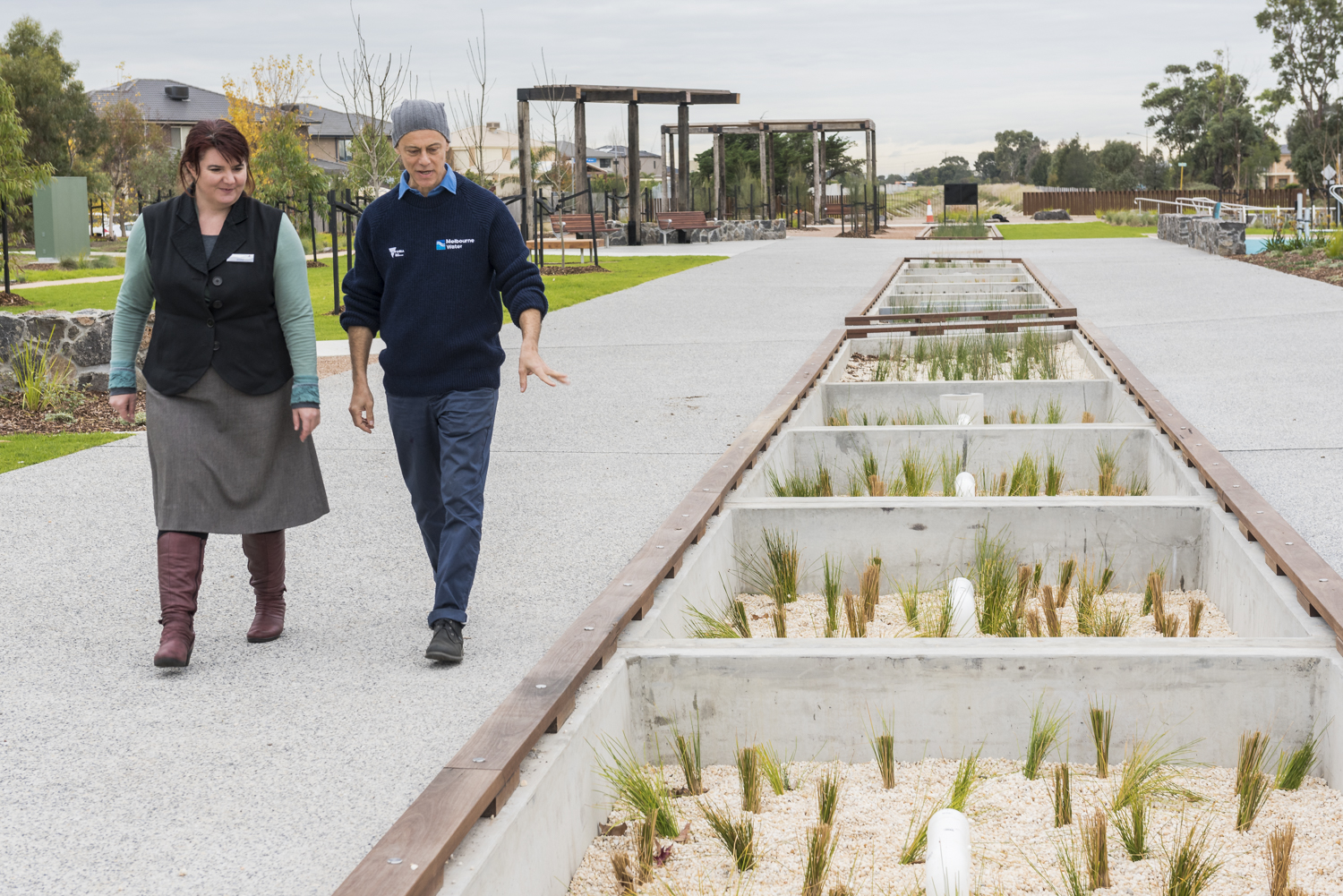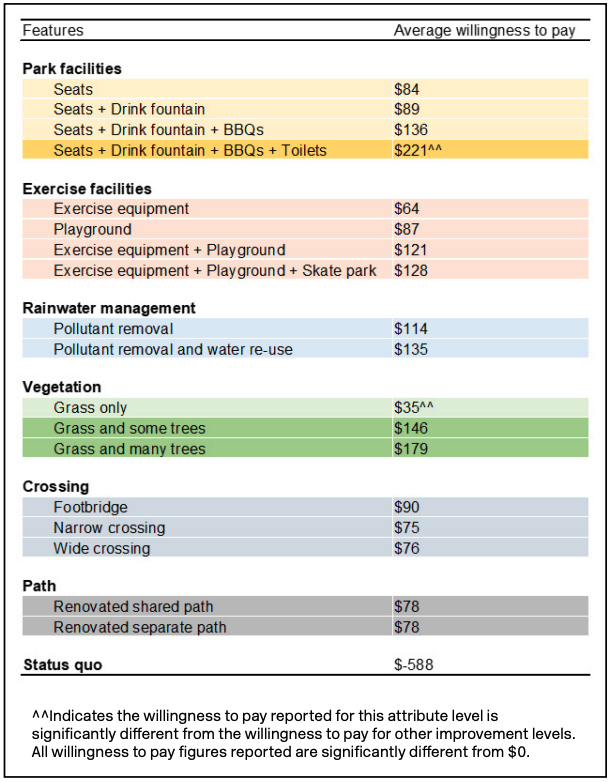New journal publication: Valuing the benefits of a multifunctional water sensitive greenspace
Increasingly, water utilities are investing in green infrastructure to improve the liveability of our cities and towns. We have good information about the physical (or environmental) performance of green infrastructure.
But, less is known about the value of services provided by these projects – e.g. environmental services, amenity benefits, and recreation and exercise opportunities. That’s because markets for many of these services and benefits don’t exist.
This was the subject of a paper recently published by researchers who were involved in the CRC for Water Sensitive Cities Integrated Research Project 2 (Comprehensive economic evaluation framework). The paper examined the value of converting Melbourne’s disused Main Outfall Sewer (MOS) into a multifunctional green space. This conversion is part of the Greening the Pipeline initiative, a partnership between Melbourne Water, local councils and VicRoads.

The study used 2 non-market valuation techniques to estimate the value of non-market services provided by the Greening the Pipeline initiative.
Hedonic pricing
Hedonic pricing estimates use values (e.g. amenity benefits) that can be captured (or capitalised) in home prices. The authors examined the influence of park improvement on the value of homes near the park. This analysis showed about 5% uplift in house prices (0.66% to 10.30%) within 50 m of Brooklyn Park after its construction. The combined uplift in the house prices was about $5 million.
Discrete choice experiment
Choice experiments estimate values for different amenity attributes, as well as the trade-offs people are prepared to make between having more or less of these attributes. The authors surveyed 868 residents who live within 5 km of the MOS. They analysed people’s responses to a series of hypothetical parkland development scenarios to understand their preferences for features such as vegetation, general park facilities, paths and tracks, exercise facilities, rainwater management and a local crossing over the pipeline:
- Respondents were willing to pay significantly more for the highest level of park facilities (“seats + drink fountain + BBQs + toilets”) than for other levels of park facilities.
- Respondents had a negative value of –$588 associated with maintaining the status quo, which indicated their strong willingness to avoid the current derelict condition.
- The aggregate non-market value of potential restoration projects could be between $29 million and $152 million, depending on the level of investment.

Source: Harold, T & Iftekhar, S (2020). Assessment of non-market benefits of implementing large-scale WSUD: Greening the Pipeline Case study. Industry Note. Melbourne, Australia: Cooperative Research Centre for Water Sensitive Cities.
This study shows restoring the MOS reserve will create significant non-market benefits for the local community. These benefits have been quantified by measuring increases in house value and in terms of people’s willingness to pay for improvements in amenity. This information helps to prioritise which activities might be undertaken in MOS restoration projects.